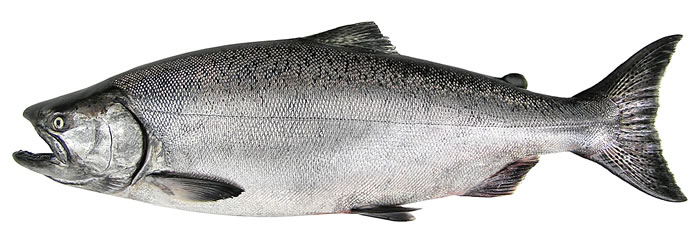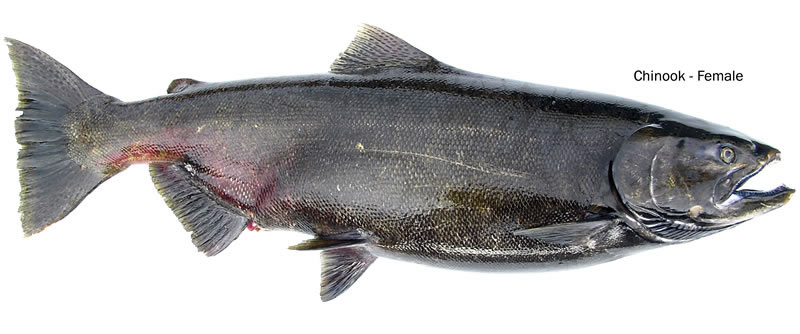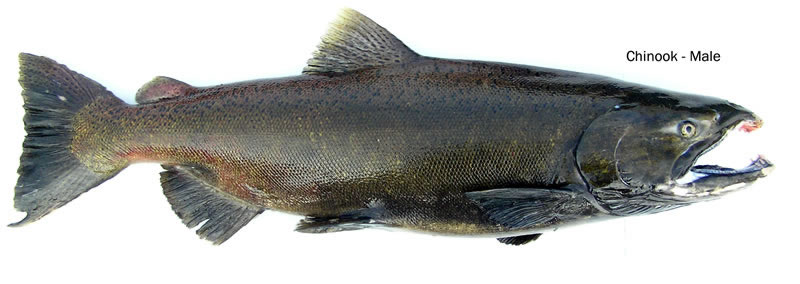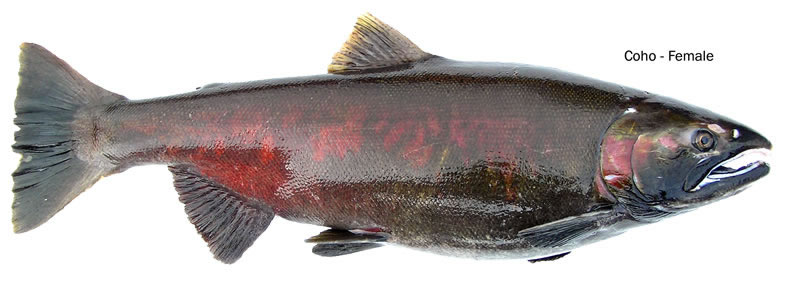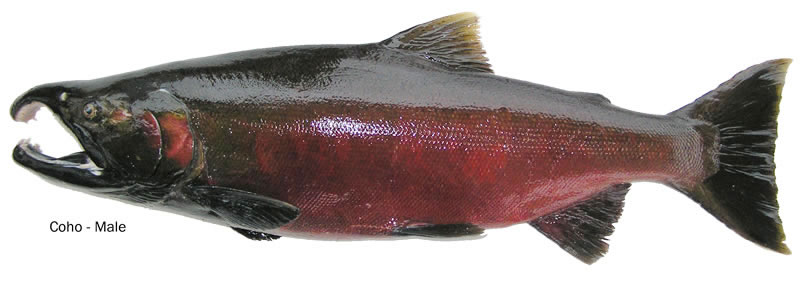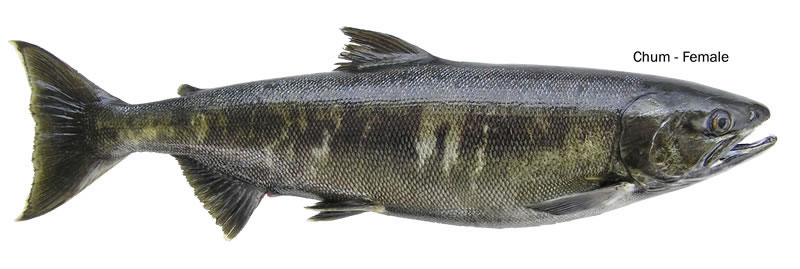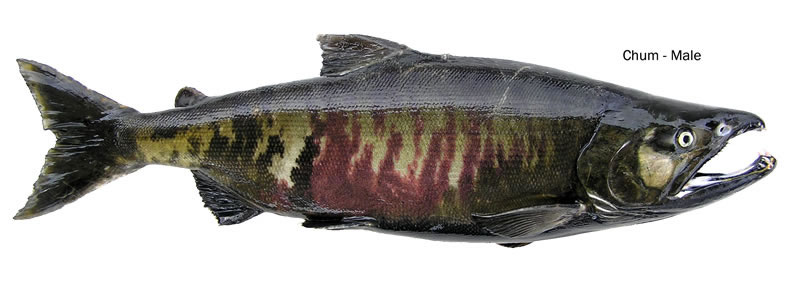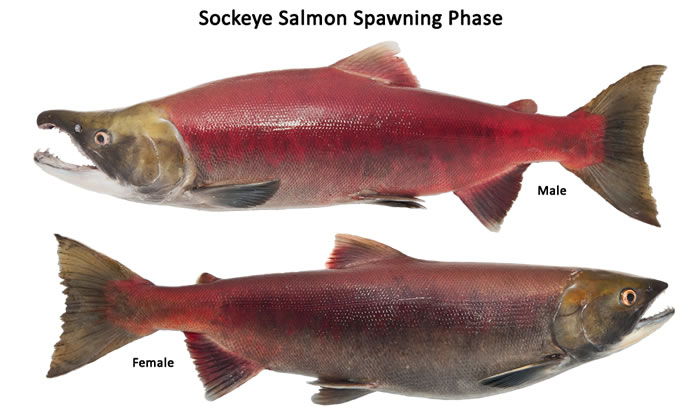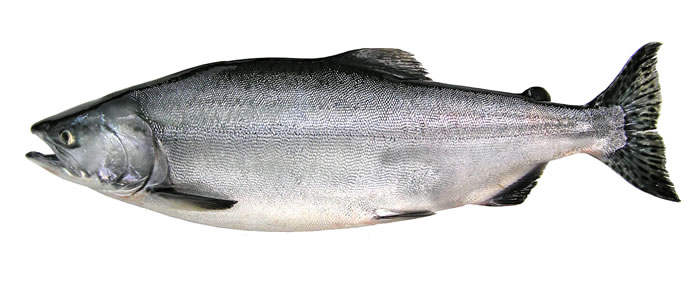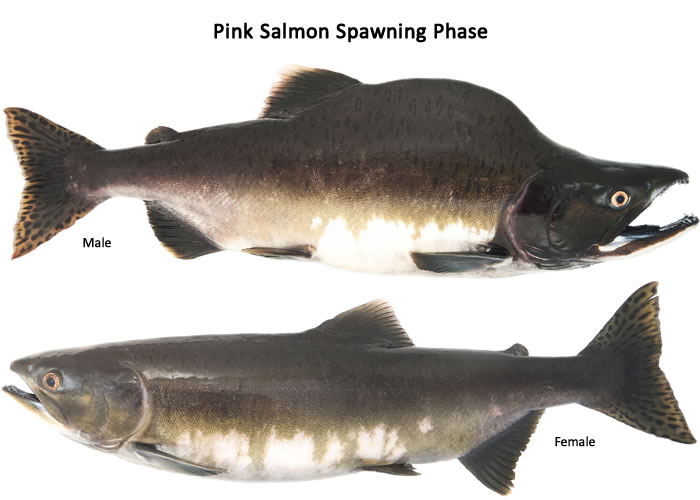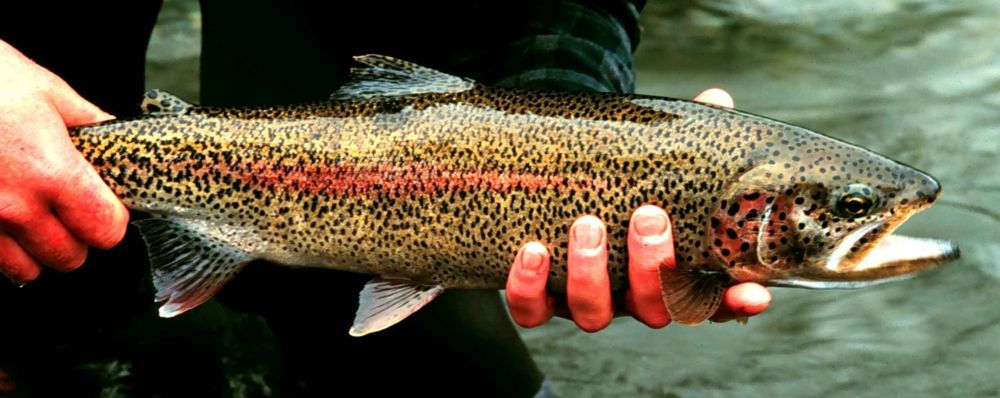Salmon are adadromous fish, meaning they migrate from the ocean to freshwater to spawn. Here are six species of salmon; all come from the Onchorhynchus genus of fish.
King Salmon / Chinook Salmon – Oncorhynchus tshawytscha
The Chinook salmon is Alaska’s state fish and the largest of the salmon species. Other names the Chinook goes by: ‘king salmon’ (due to its size), ‘blackmouth’ (because of its mouth coloration), and ‘spring salmon’ (Canada). Chinook salmon have black, irregular shaped spots on the back and the dorsal fin, and on both lobes of the tail. The mouth is black with black gums. Spawning Chinook change their color from bright silver to olive brown and dark maroon.
Coho Salmon – Oncorhynchus kisutch
Coho salmon also go by the name ‘silver salmon’ because of their coloring. They resemble Chinook salmon and are silver in color but are smaller. Coho have black mouths with distinct white gums on the lower jaw. During spawning, their color changes to dark brown and their heads turn a green-black color.
Chum Salmon – Oncorhynchus keta
Chum salmon are also called ‘dog salmon’ because of the canine looking teeth the males have, and ‘calico salmon’ due to the calico splotchy coloring they get when spawning of olive green, maroon, and dark red. Chum salmon have the opposite coloring of their gum lines than that of the Coho, going from light to dark, and then dark again.
Sockeye Salmon – Oncorhynchus nerka
Sockeye salmon has brightly colored flesh that makes it ideal for canning. Their coloring is silver, and they are relatively free of the black spots that are on the other salmon. When spawning, they turn a vibrant red on their bodies with dark green heads, their mouths with a characteristic hook.
Pink Salmon – Oncorhynchus gorbusha
The pink salmon are known as ‘humpback salmon’ due to the distinct humpback the males develop on its back during spawning. And during spawning, the color changes from silver with black spots to a dull gray at the top back fading to white. It is the smallest of the salmon but their flavor make it an important to commercial fisheries.
Steelhead / Rainbow Trout – Oncorhynchus mykiss
The steelhead trout and rainbow trout are the same species, but live differently. Steelhead are anadromous while the rainbow trout live their entire lives in freshwater. Unlike most salmon, steelhead are iteroparous meaning they can spawn more than once.

